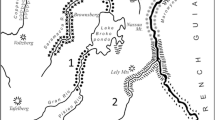Abstract
What is probably the world’s largest neem (Azadirachta indica) plantation is on 10 sq km in the Plains of Arafat, Saudi Arabia, where 50,000 trees have been planted recently. The project, designed to provide shade to the ca. 2 million Muslim pilgrims who camp there annually for “Haj” rites, has economic potential. Pest-control materials, soap, toothpaste, and pharmaceutical products are among items that could be produced for home consumption and export. Introduced into the country more than 40 yr ago, the tree has acclimated itself remarkably well to the local hot and arid conditions.
La Culture du Neem (Azadirachta indica,Meliaceae)en Arabie Seoudite. La plus grande plantation de neem (Azadirachta indica) entourne dix kilometres carrés dans les Plaines d’Arafat, Arabie Séoudite, où 50.000 arbres ont étés plantés récemment. Le projet, créé pour fournir ombrage aux 2 millions de pèlerins musulmans qui y campent annuellement pour les rites de “haj,” a potentiel économique. Les articles que l’on pourra produire pour consommation domestique et exportation incluent les matériels pour régler des pestes, le savon, le dentifrice, et les produits pharmaceutiques. Introduit au pays il y a plus que 40 ans, l’arbre s’est adapté remarquablement bien a la chaleur locale et aux conditions arides.
Similar content being viewed by others
Literature Cited
Ahmed, S., and M. Grainge. 1986. Potential of the neem tree (Azadirachta indica) for pest control and rural development. Econ. Bot. 40:201–209.
Ayers, R. S., and D. W. Westcot. 1985. Water quality for agriculture. Irrigation and Drainage Paper No. 29, Rev. 1. FAO, Rome.
Grainge, M., and S. Ahmed. 1988. Handbook of plants with pest-control properties. John Wiley & Sons, New York.
Ketkar, C. M. 1976. Utilization of neem (Azadirachta indica) and its by-products. Directorate of Non-Edible Oils and Soap Industry, Khadi & Village Industries Commission, Pune, India.
—, and S. M. Ketkar. 1984. Potential of neem oil and neem cake production in India. Paper presented at Res. Planning Workshop, Botanical Pest Control Project, Int. Rice Res. Inst., Los Banos, Philippines.
Khattab, A. B., and M. N. El-Hadidi. 1971. Results of a botanic expedition to Saudi Arabia in 1944–45. Publ. No. 4, Cairo Univ. Herbarium. Cairo Univ. Press, Cairo.
Lewis, W. H., and M. P. F. Elvin-Lewis. 1983. Neem (Azadirachta Indica) cultivated in Haiti. Econ. Bot. 37:69–70.
Radwanski, S. 1977. Neem tree-4: a plantation in Nigeria. World Crops and Livestock 29(5):222–224.
—, and G. E. Wickens. 1981. Vegetative fallow and potential value of the neem tree (Azadirachta indica) in the tropics. Econ. Bot. 35:398–414.
Author information
Authors and Affiliations
Rights and permissions
About this article
Cite this article
Ahmed, S., Bamofleh, S. & Munshi, M. Cultivation of Neem (Azadirachta indica, Meliaceae) in Saudi Arabia. Econ Bot 43, 35–38 (1989). https://doi.org/10.1007/BF02859323
Received:
Accepted:
Issue Date:
DOI: https://doi.org/10.1007/BF02859323




